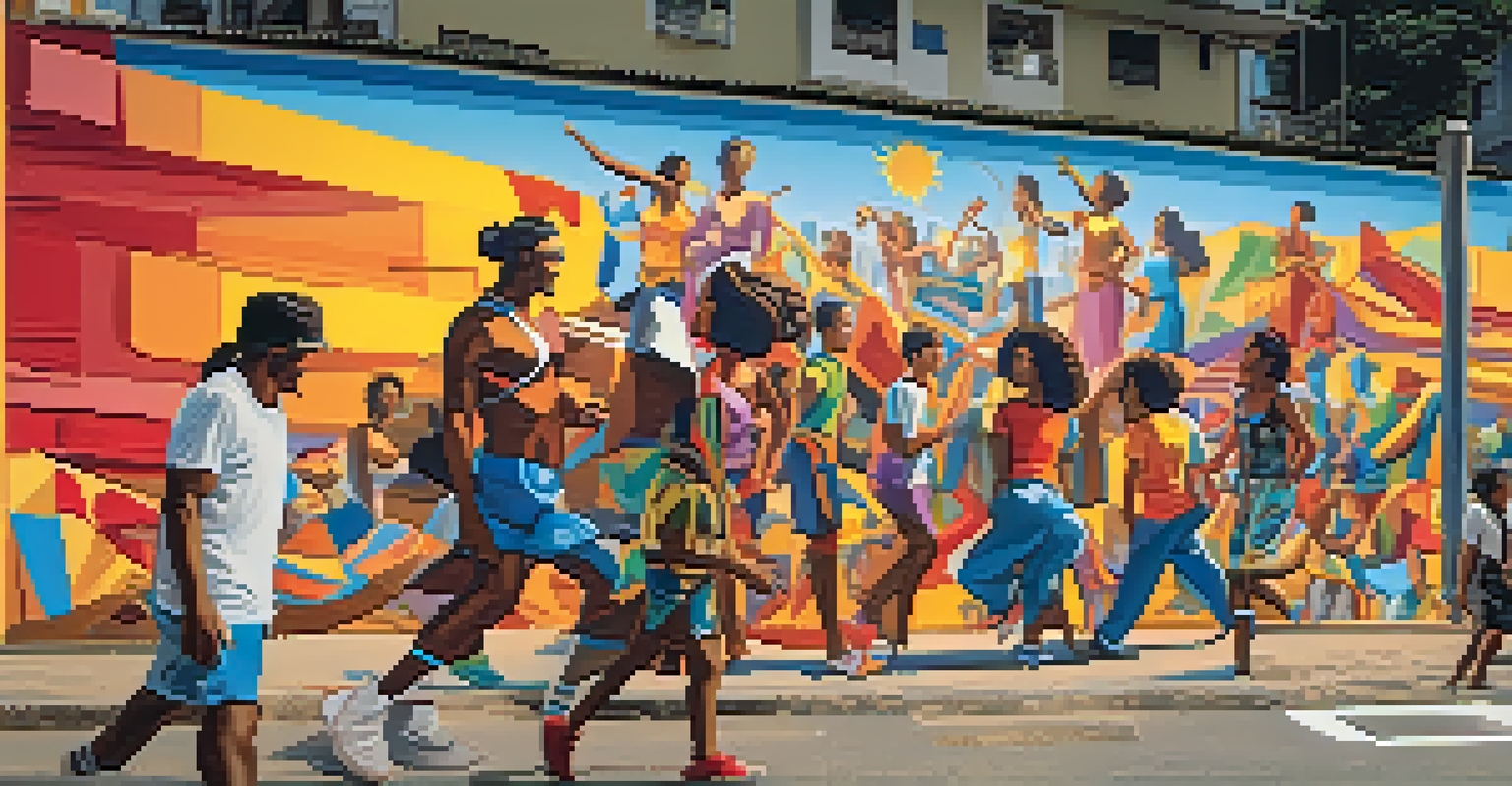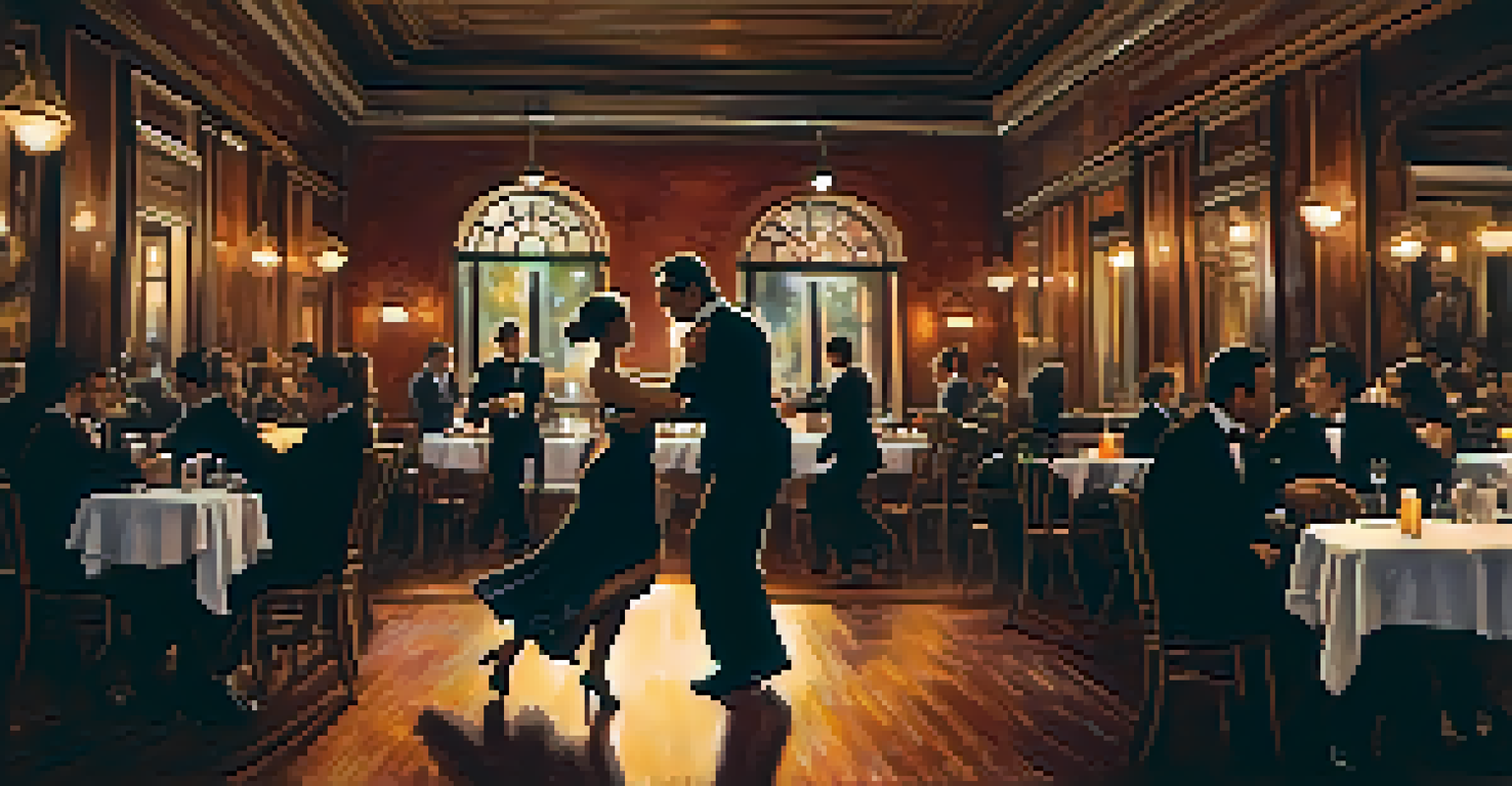Art and Culture in South America: A Traveler's Guide

The Rich Tapestry of South American Art
South America boasts a stunning array of artistic expressions, from ancient civilizations to contemporary movements. Each country has its unique style, influenced by indigenous cultures, colonial history, and modern trends. For instance, the bold colors of Peruvian textiles tell stories of heritage, while Brazilian street art reflects urban life and social issues.
Art is the most beautiful of all lies.
Visiting local galleries and museums is a must for any art enthusiast. In Buenos Aires, the Museo de Bellas Artes showcases a blend of European and Argentine art, while São Paulo’s street art scene, particularly in the neighborhood of Vila Madalena, bursts with creativity. These spaces not only display art but also offer insights into the region's social and political narratives.
To truly appreciate South American art, consider attending local festivals. Events like the Carnival in Rio de Janeiro or the Inti Raymi in Cusco highlight traditional dances, music, and visual arts, creating an immersive experience that connects travelers with the local culture.
Indigenous Cultures and Their Influence
Indigenous cultures play a pivotal role in shaping South America's artistic landscape. From the intricate pottery of the Mapuche in Chile to the vibrant murals of the Quechua in Peru, these communities preserve and share their rich heritage through art. Travelers can explore this influence by visiting indigenous markets and participating in workshops.

One fascinating aspect is the use of natural materials in indigenous art. For example, the vibrant dyes used in textiles often come from local plants, reflecting a deep connection to the land. Engaging with artisans in places like Otavalo, Ecuador, provides a firsthand look at these traditional methods and the stories behind them.
Diverse Artistry Across South America
South America showcases a rich tapestry of artistic expressions influenced by indigenous cultures, colonial history, and modern trends.
Moreover, many art forms serve spiritual purposes, intertwining daily life with belief systems. Learning about these practices not only enriches your travel experience but also fosters respect for the cultural diversity present in South America.
Exploring Traditional Music and Dance
Music and dance are integral to the cultural fabric of South America, often serving as expressions of identity and community. Genres like tango in Argentina and samba in Brazil resonate with rhythm and history, inviting travelers to engage in the local culture. Taking a dance class or attending a live performance can be a fun way to immerse yourself in this vibrant scene.
The beauty of the world lies in the diversity of its people.
Each region has its unique musical styles, influenced by indigenous, African, and European traditions. In Peru, for example, the Andean sounds of pan flutes transport listeners to the mountains, while in Colombia, cumbia and vallenato rhythms bring people together in celebration. Exploring these diverse sounds can enhance your understanding of the local culture.
Additionally, festivals such as the Festival de la Canción de Viña del Mar in Chile or the Festival Internacional de Jazz in Bogotá showcase both local and international talent. These events not only highlight the music but also serve as a platform for cultural exchange, making them a must-visit for any traveler.
The Culinary Art Scene
South America’s culinary landscape is a feast for the senses, blending traditional flavors with innovative techniques. From the ceviche of Peru to the asado in Argentina, each dish tells a story of its origin. Travelers can explore these culinary arts by indulging in local markets and dining experiences that celebrate regional ingredients.
Street food is another avenue to discover the culture, offering delicious snacks like empanadas and arepas that are both affordable and authentic. Engaging with local vendors can provide insights into the history and preparation of these beloved dishes. Don't be surprised if you find yourself making friends over a shared plate!
Cultural Immersion Through Festivals
Attending local festivals and events provides travelers with immersive experiences that connect them to the region's vibrant culture and traditions.
Moreover, food festivals, like the Mistura in Peru, highlight the country’s gastronomic diversity and showcase renowned chefs. Participating in these events not only satisfies your taste buds but also connects you to the vibrant culture surrounding South American cuisine.
Architecture: A Blend of Old and New
The architecture of South America reflects its complex history, with colonial buildings existing alongside modern skyscrapers. Cities like Quito in Ecuador and Salvador in Brazil showcase stunning colonial architecture, with colorful facades that transport you back in time. Walking through these historic districts reveals the stories embedded in the walls.
Conversely, contemporary architecture brings a fresh perspective to urban landscapes. The Museum of Tomorrow in Rio de Janeiro, designed by Santiago Calatrava, fuses innovative design with environmental sustainability. Such structures are not just visually striking but also symbolize the region's forward-thinking spirit.
Exploring architectural landmarks provides a deeper understanding of each city’s cultural identity. Whether you’re admiring the intricate details of a baroque church or the sleek lines of a modern museum, each building contributes to the narrative of South America’s rich cultural heritage.
Film and Literature: Voices of a Region
South American literature and film offer unique perspectives on the social and political realities of the region. Writers like Gabriel García Márquez and Jorge Luis Borges have captivated audiences with their storytelling, often weaving magical realism into their narratives. Exploring local bookstores or attending literary festivals can lead to discovering hidden gems of literature.
Similarly, the film industry in South America is thriving, with directors like Lucrecia Martel and Sebastián Lelio gaining international acclaim. Watching films that depict the region's culture and challenges can provide a deeper understanding of its complexities. It's an engaging way to connect with the local narrative.
Engaging with Local Communities
Interacting with locals and participating in workshops or guided tours fosters authentic experiences and a deeper appreciation for South America's art and culture.
Additionally, participating in film screenings or discussions can enrich your travel experience. Engaging with locals about their favorite films or authors can spark meaningful conversations and enhance your appreciation of South America's diverse cultures.
Tips for Enjoying Art and Culture in South America
To fully enjoy the art and culture of South America, it’s essential to approach your travels with an open mind and a sense of curiosity. Take the time to engage with locals, whether it’s through guided tours, workshops, or casual conversations. This interaction can lead to authentic experiences that go beyond the typical tourist path.
Consider timing your visit around local festivals or events to immerse yourself in the culture. Participating in these celebrations allows travelers to witness traditional customs, music, and food firsthand. It’s an excellent way to connect with the heart of the community.

Lastly, don’t forget to document your journey. Whether through photography, journaling, or sketching, capturing your experiences can deepen your appreciation for the art and culture you encounter. This reflective practice not only enhances your journey but also creates lasting memories.